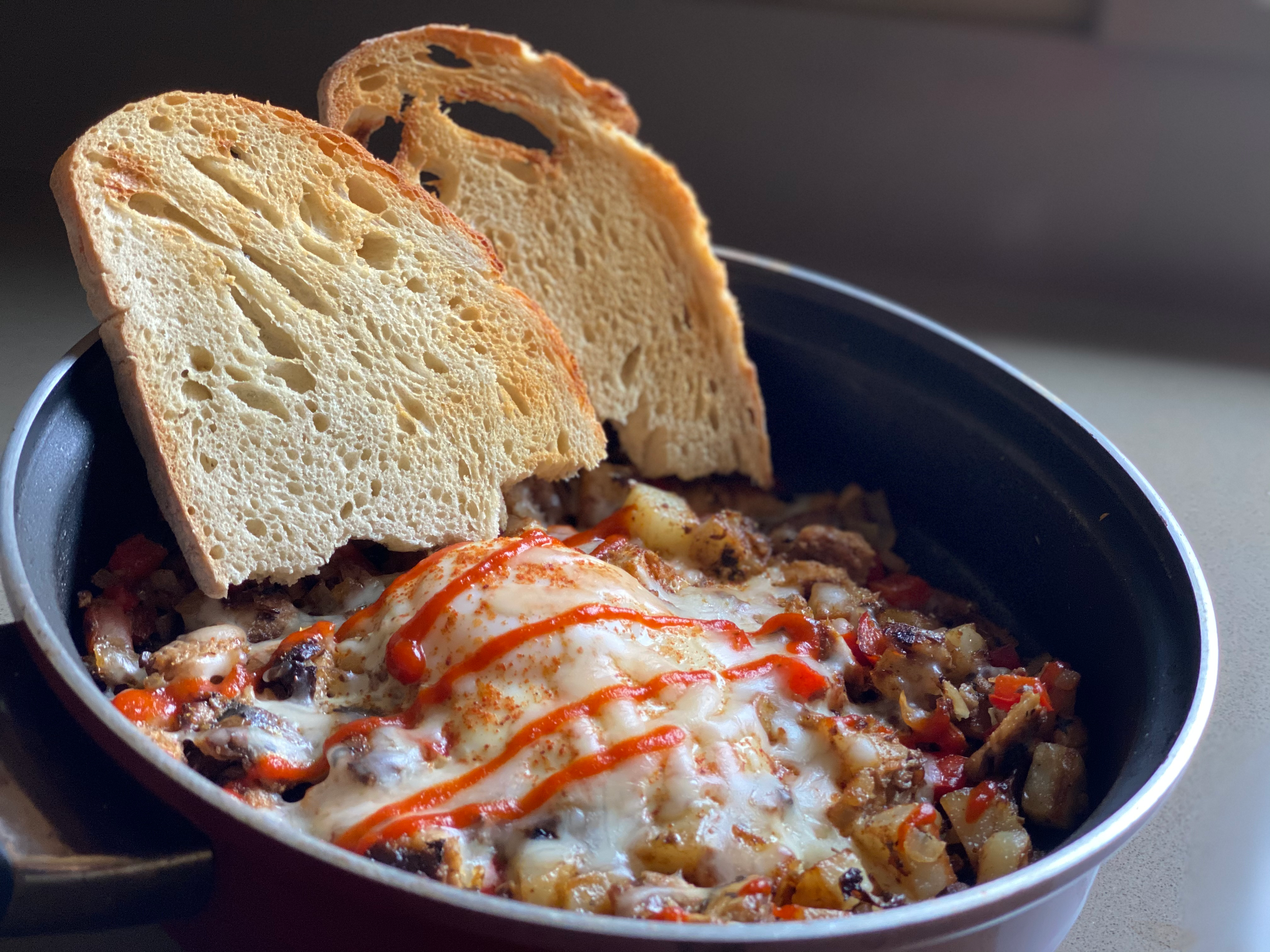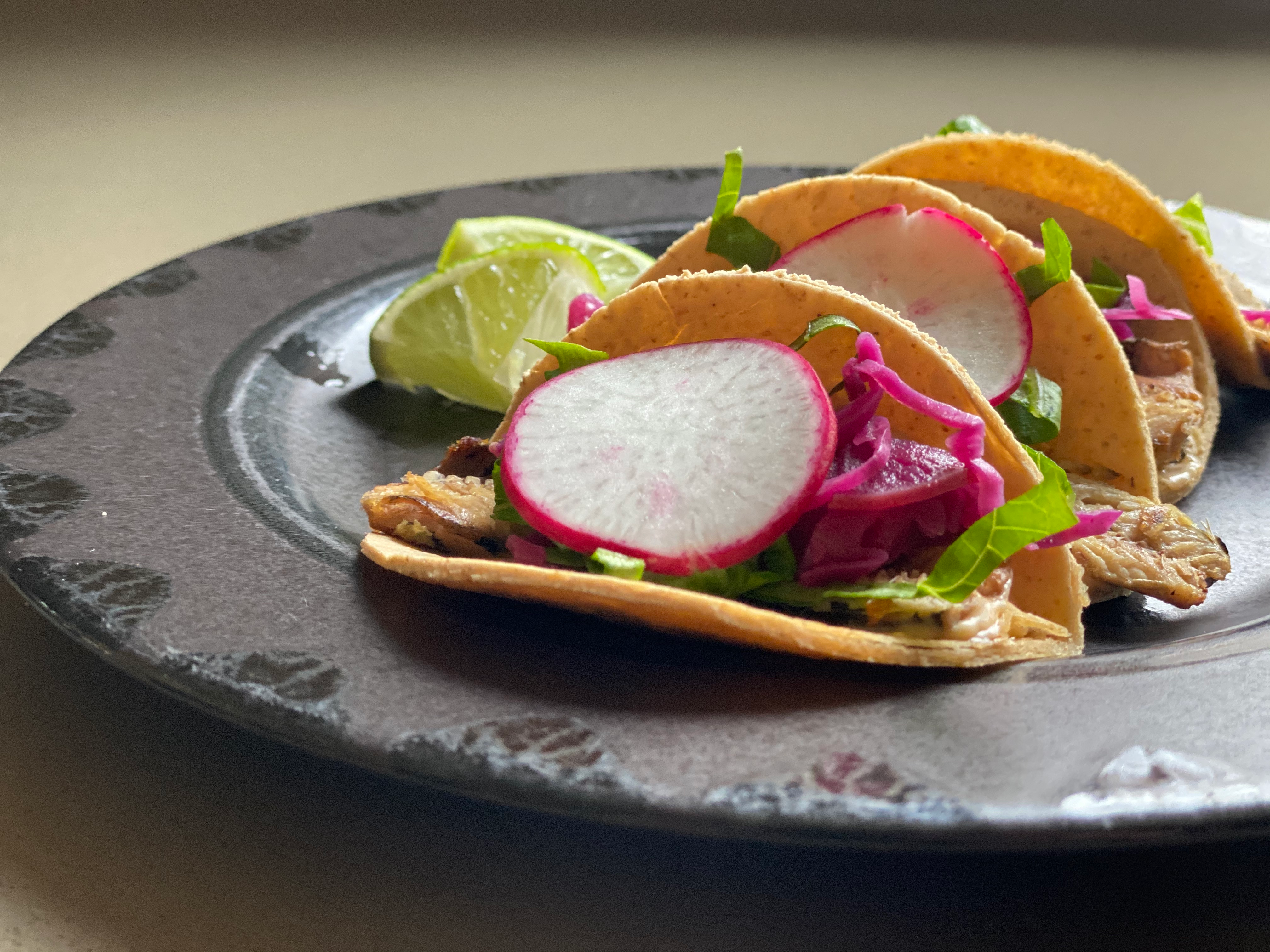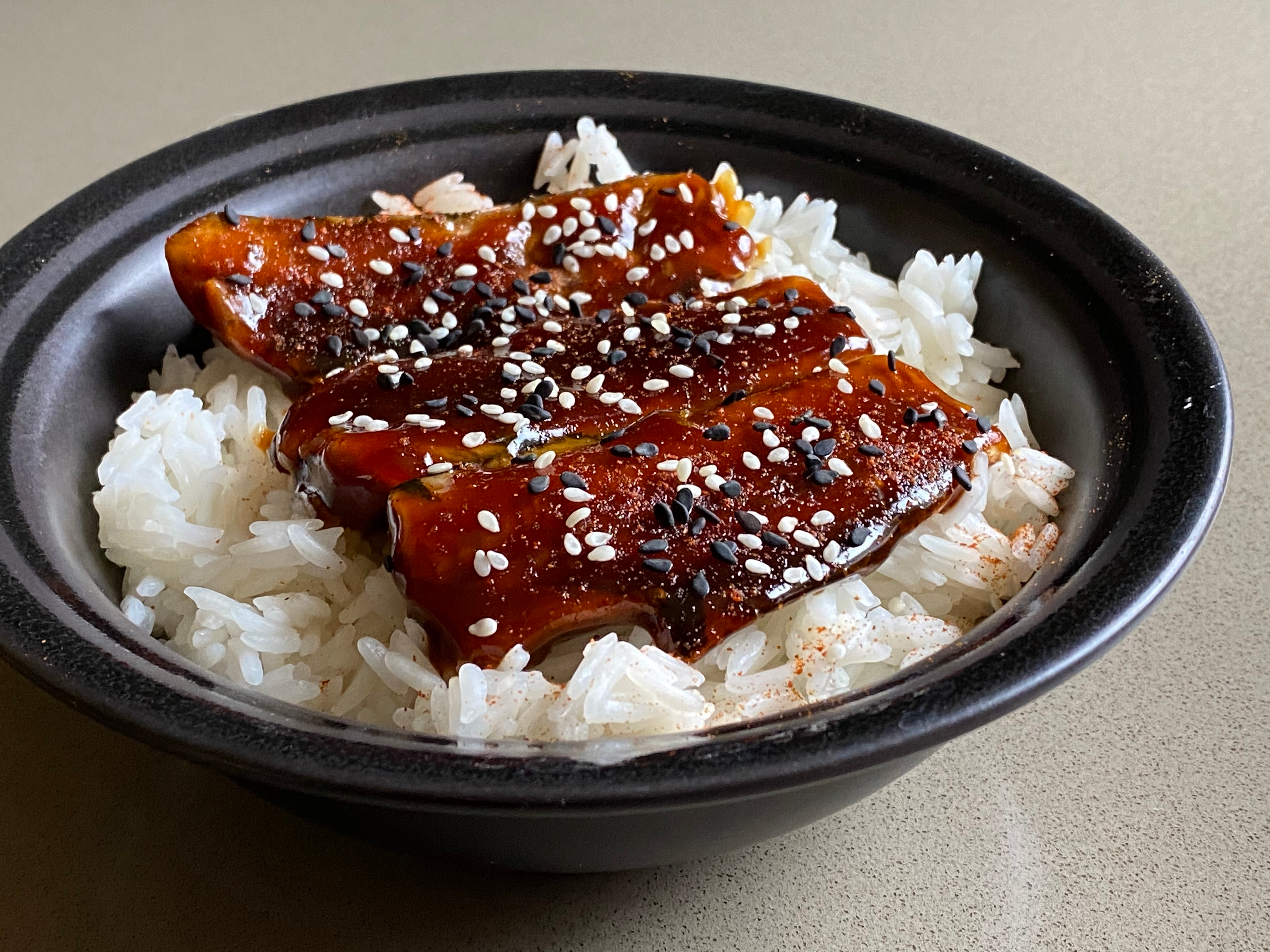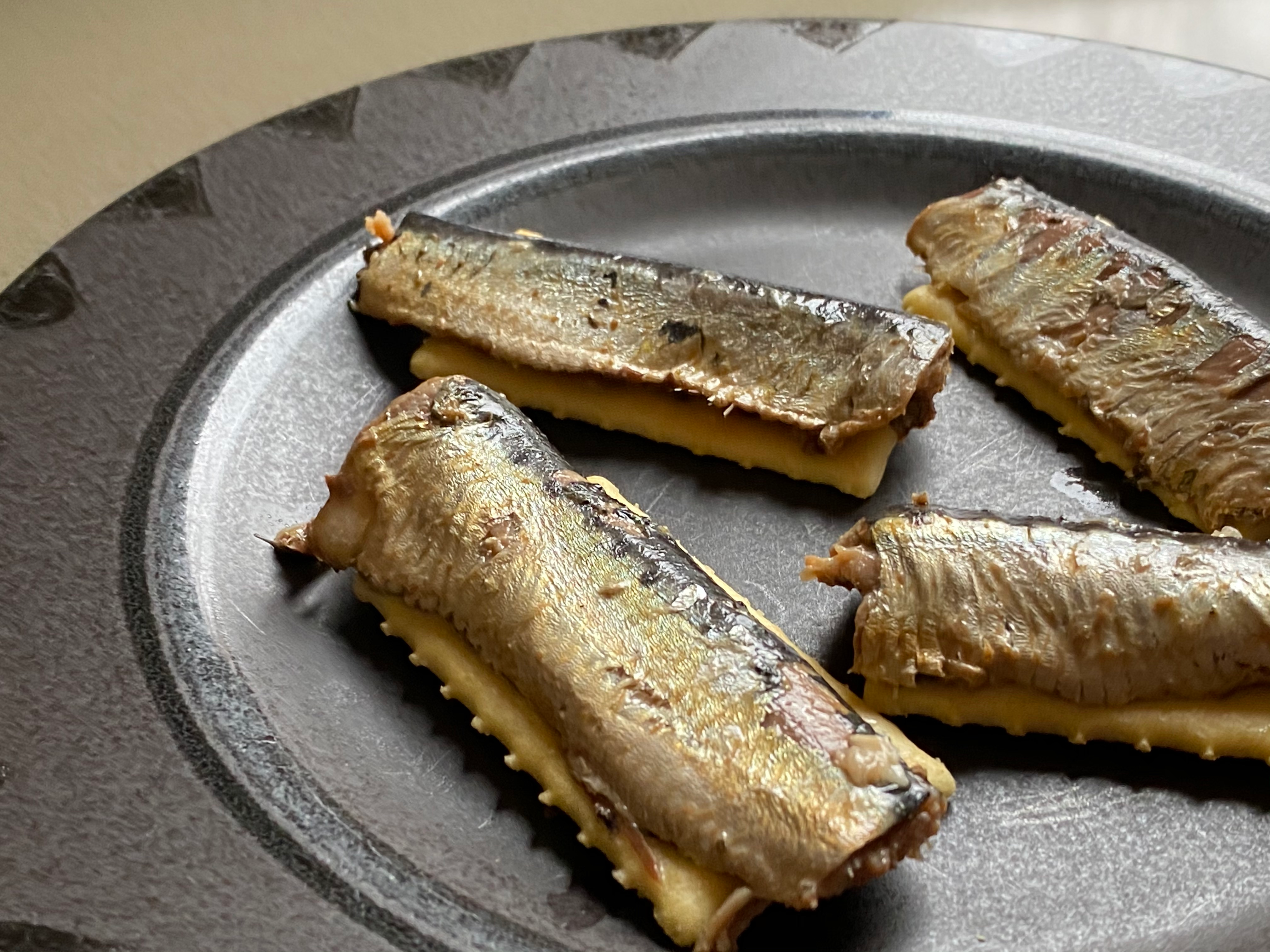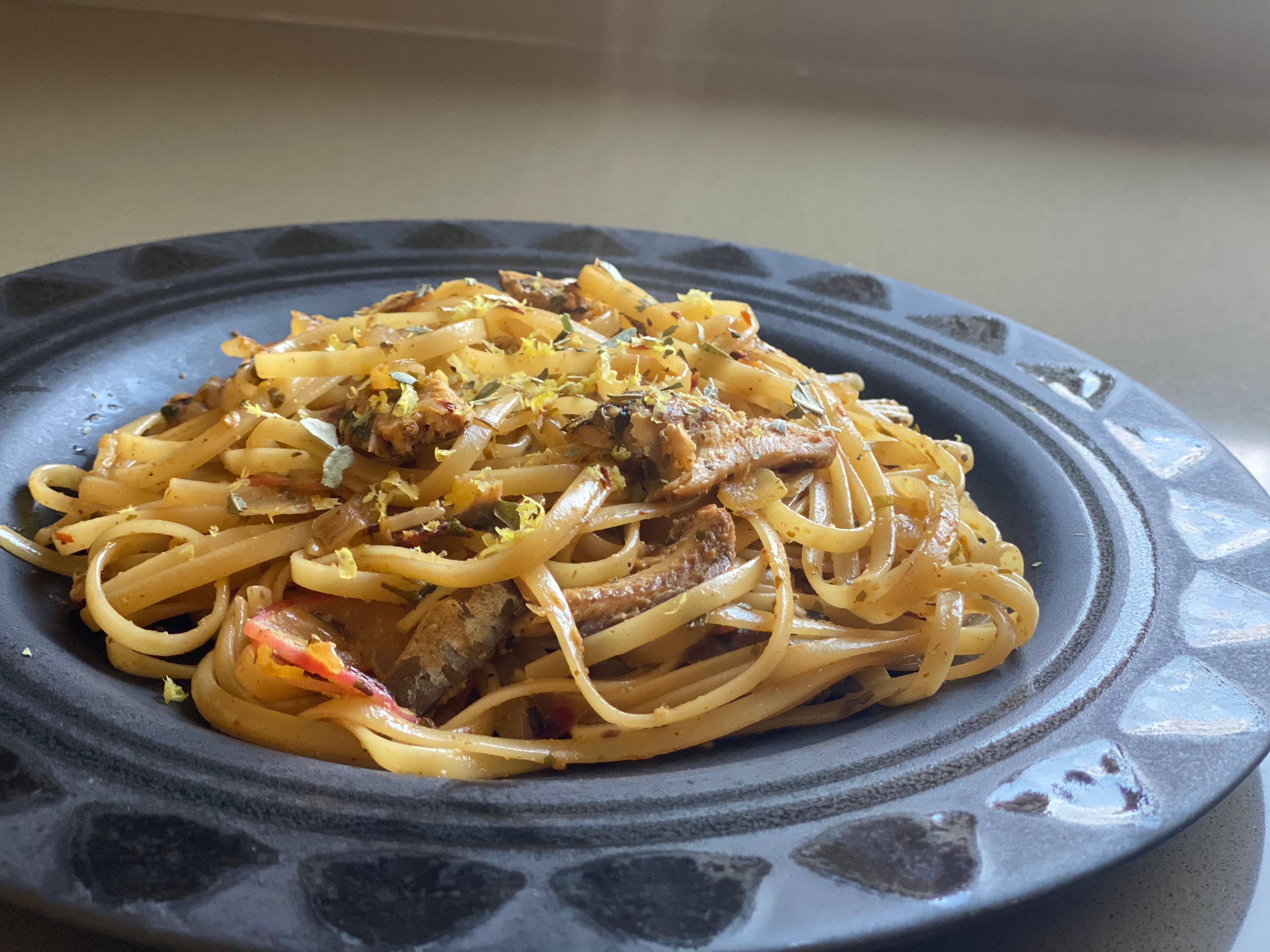A Dive Into The Briny Depths Of Sardines
My paternal grandfather passed away before I was born, so I unfortunately don't have any personal memories of him. I do, however have a delightful anecdote that I've clung to for years: how he would frequently enjoy a can of sardines from his living room throne while watching his evening television. I've been forever enamored with the fact that he had a nightly ritual revolving around the enjoyment of tinned fish, an out-of-style food that most of us very purposefully avoid on our weekly trips to the grocery store.
But why do most of us stick our collective nose up at sardines? They're a cheap, extremely low-calorie, protein-dense, and relatively sustainable food product. Sure, they're a whole-animal food source, which makes most people more than a little squeamish, and sure, their flavor profile and smell are both particularly strong and undoubtedly fishy, but are those really reasons enough to completely avoid them?
I myself am guilty of disregarding sardines as a viable meal option, which might not be a surprise, given my infatuation with less healthy and less sustainable meat products that's well-documented on this particular food site. But most of the time, I'm a generally health-conscious and economical consumer, so I decided to dive headfirst into the world of tightly packed tinned fish to figure out whether sardines deserve their icky reputation.
Five days. Five sardine meals. Five varying recipes. The meals were as follows:
- Sardine breakfast hash
- Lemon sardine pasta
- Grilled sardine mini tacos
- Sweet and smoky sardines over rice
- Sardines and Club crackers
Now is as good a time as any to note that I originally pitched this idea well over a month ago. The experiment was carried out and the story was written during our current pandemic, which proved to be an added challenge to my creativity in devising recipes—but also a blessing, since it broke up the monotony of quarantine meals. Some specific ingredients like fresh herbs and corn tortillas were sparse or nonexistent at my grocery store: a minor obstacle given the seriousness of these times, but worth noting nonetheless.
Here's what I learned:
Sardines have a flavor that (almost) can’t be overpowered
One of my biggest takeaways from cooking and eating sardines for a week is that the "mild flavor" advertised on the box of Wild Planet sardines I purchased is a bold-faced lie. Now, that's not to say that I find the flavor and smell to be as offensive as others do (those others include my partner and her parents, with whom we've been quarantined). But it is to say that the flavor is strong enough that it can handle a heavy hand with spices and acid.
This was most noticeable when I made familiar dishes that essentially swapped sardines directly for another protein source, like the breakfast hash and grilled tacos. The tacos in particular, although they were tasty enough that I cleaned the plate, felt like they could have taken on more lime juice, more spice, and maybe even another garnish besides the veggies and spicy mayo I used. Maybe I could have fried the sardines? Would that have been cheating? Or would that have been just gross?
My experience with sardines over rice was similar. I prepared a sticky, flavorful sauce made up of sushi vinegar, molasses, soy sauce, hoisin sauce, smoked paprika, and cayenne that was reduced until thick and then used it to thoroughly coat my sardines. Even with the abundance of bold seasonings, the umami of the sardines shined through more than any other flavor.
Texture is important
These little fuckers are delicate! Learning how to handle sardines without them completely falling apart in my hands or on the cutting board was a true challenge. I mean, why are they so tightly packed in the can in the first place? Why not leave a little bit of room for my fat little fingers to pull them out?
These fish are so delicate and tender that their texture can quickly turn from flaky to mushy if they're not seared properly. I learned this the hard way with my breakfast hash, which was by far my least favorite preparation due to the chopped and pan-fried sardines getting lost in a bowl full of other soft and gooey ingredients.
My recommendation? If you're eating sardines that aren't pureed into a pâté or mixed into a sauce, then I'd suggest leaning into their briny tenderness by keeping the preparation simple: serve them straight on crackers or toast topped with spices, cheese, or herbs. Or, if you're going to cook them through, give your sardines a quick but hot sear before tossing them with a pasta, salad, or other recipe of your choosing.
A little goes a long way
A can of sardines is roughly three and a half ounces, not far off from the weight of a small chicken breast. However, their flavor has much, much more impact.
I've already noted that I didn't enjoy sardines in my breakfast hash. Besides the texture being off, the flavor of the sardines overpowered everything else in the dish—and I only used one can, which is one serving. But when I split a whole can between two plates, as I did with the pasta, the flavor was balanced and quite good. I can't attest to how well sardines boost the flavor of a soup or sauce because I didn't try it myself, but I reckon that a whole can is the perfect quantity for a large batch meal.
This rule doesn't apply to snacking, however. Somehow, when I tried eating sardines straight on Club crackers, it was very easy to wolf down an entire can in mere minutes.
A fishy conclusion
Do I absolutely love sardines now in some new and dramatic way after eating them for a week? I wouldn't say that. However, I believe that was more or less the point, wasn't it? I ate them so often I became desensitized to them, which is the opposite of drama.
But I now know of more than a few decent ways to prepare and consume sardines. Whether I'll purchase them frequently from the store remains to be seen.
Want to try one of the dishes I prepared? Here's the recipe for the pasta I made. I believe it's the most versatile dish from my sardine adventure, so feel free to add to or subtract from it with whatever you have on hand. Spinach, Parmigiano-Reggiano, capers, or olives would have been great additions if I'd had any. Give it a try and share your thoughts in the comments.
Lemon Sardine Pasta
- 1 (4-oz.) can sardines
- 6 oz. linguine or other dried pasta
- 2 Tbsp. olive oil, divided
- 1 small onion, finely chopped
- 2 garlic cloves, finely chopped
- ½ tsp. crushed red pepper flakes
- ½ cup dry white wine
- 2 radishes, thinly sliced
- 1 lemon, freshly squeezed
- Kosher salt and freshly ground pepper
- Parsley, fresh or dried (for serving)
- Lemon zest (for serving)
Cook pasta in a large pot of boiling water that's been heavily salted. Stir occasionally, cooking until al dente. Drain, reserving half a cup of the pasta cooking water.
While pasta is cooking, heat one tablespoon of olive oil in a large heavy pot over high heat. Grill sardines, one minute per side, then remove from the pot. Reduce heat to medium and add onion, garlic, and red pepper flakes. Cook until fragrant, about 2 minutes.
Add wine to deglaze the pot, then add the pasta and reserved pasta water. Increase heat to medium-high until the liquid has reduced enough that it coats the pasta.
Fold in radishes, sardines, and lemon juice. Season with salt and pepper. Serve topped with lemon zest and more pepper.
